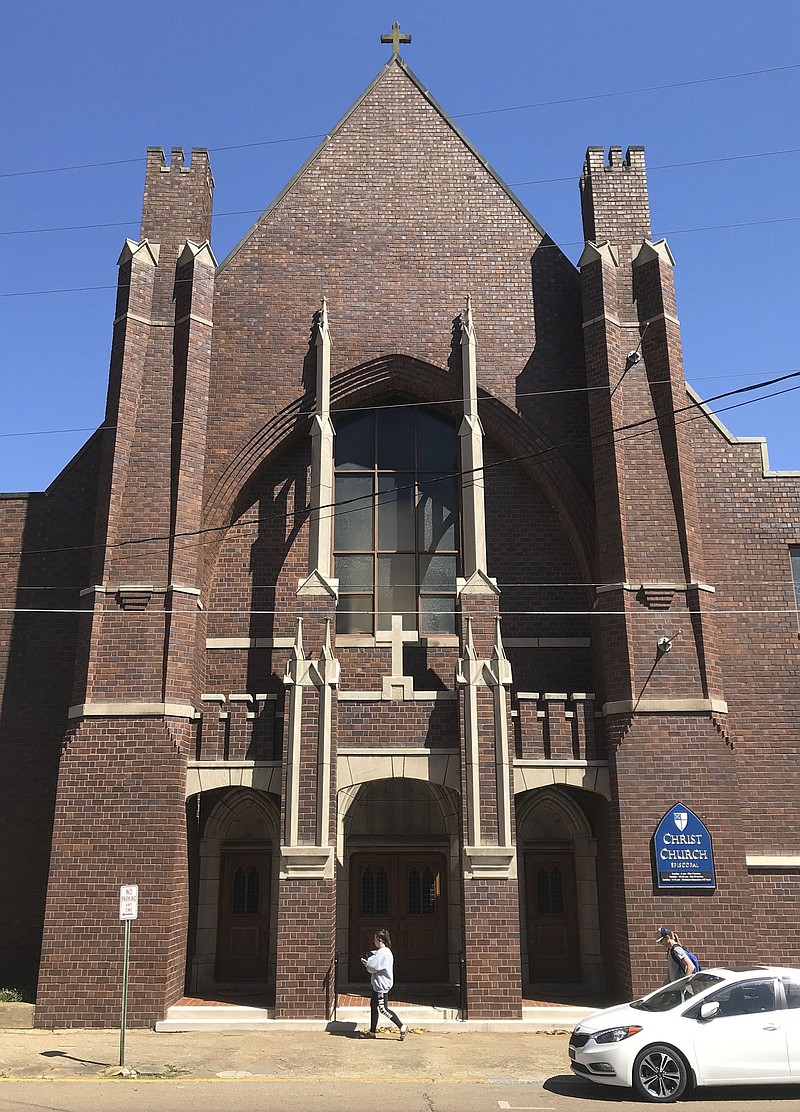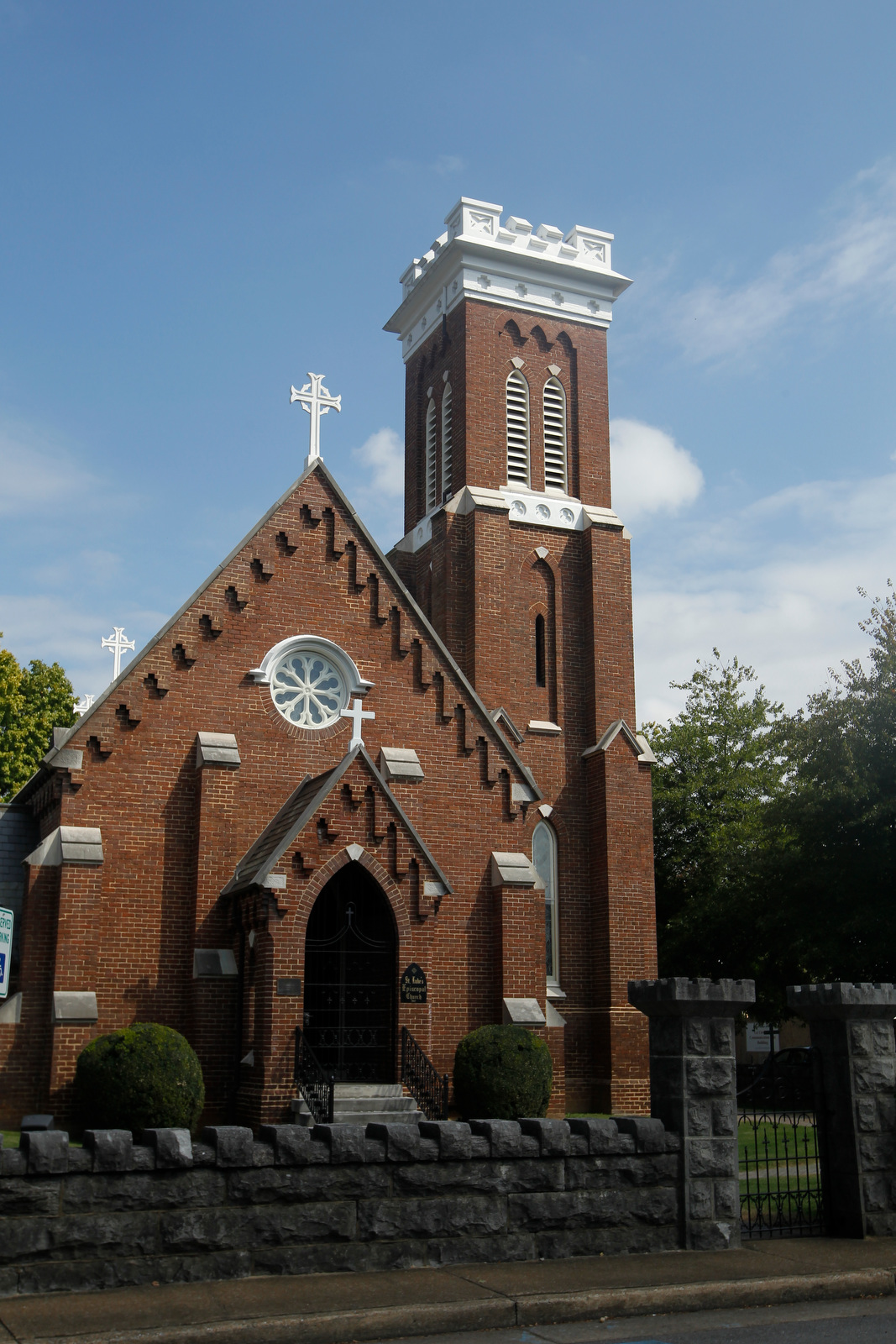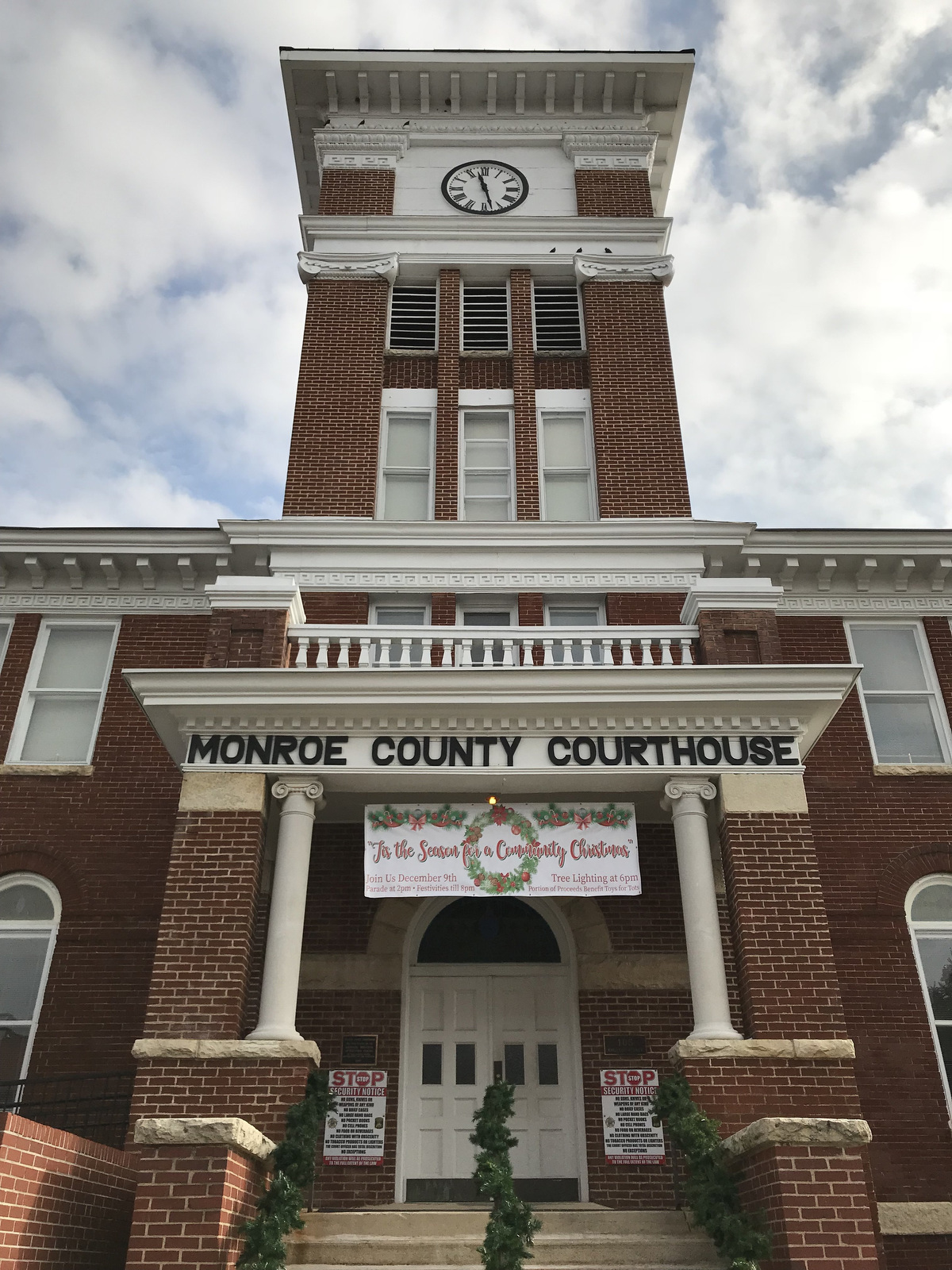Federal Historic Preservation Fund grants of $25,000 apiece will help pay for preservation work at two area churches on the National Register of Historic Places, one in Chattanooga and the other in Cleveland, Tennessee.
According to a Wednesday news release from the Tennessee Historical Commission and State Preservation Office, Christ Church Episcopal on Douglas Street in Chattanooga and St. Luke's Episcopal Church on Ocoee Street in Cleveland both got part of $900,000 in federal funds in November split among 35 recipients across the state to use for preservation and archaeological projects.
St. Luke's is the larger and older of the two churches and was named to the register in 1982, according to federal documentation. Christ Church was built in 1906 and named to the register in 2021.
ST. LUKE'S
Cleveland's St. Luke's Episcopal was built in 1873 and is described as an outstanding example of Victorian Gothic architecture. It is the work of architect Peter J. Williamson, of Nashville, according to documents.
(READ MORE: Cleveland, Tennessee, Church's organ is given new life)
The cruciform-shaped brick building, with broad gable roof, square corner tower, lancet-arched doors and windows and brick buttresses remains virtually unaltered, register documents state. The story of the building's benefactor is a part of Cleveland history.
John H. Craigmiles, of Cleveland, donated the building in memory of his 7-year-old daughter, Nina, who was killed on St. Luke's Day 1871, according to documents.
The architectural importance of the building within the community is enhanced by its association with the Craigmiles family, who also built the Italian villa style P.M. Craigmiles House, listed on the national register in 1975, and the Second Empire style Craigmiles Hall, listed on the register in 1980. According to register documents, the three buildings, constructed during the 12 years from 1866 to 1878, represent architectural styles popular during the Victorian period.
The church retains the original appearance on both the interior and exterior and was built at a cost of $22,000, documents state.
Dan Traczek, St. Luke's junior warden and member of the church for the past 10 years, oversees the work and helped file for the grant, which requires a 40% match from the recipient.
"We submitted a much much larger project expecting to get nothing," Traczek said Friday in a phone interview.
"The commission dictates what you're going to do," Traczek said. "What we proposed to them late last year is a total renovation of the church inside and out."
With the proposed project so large, Traczek said he didn't think there would be any money available to do anything, but the grant and local match will total around $42,000 and will be used to preserve the lower part of the 149-year-old brick-and-mortar exterior.
"What this is going to do is some masonry mortar work from the ground to 6 feet up the wall," he said. "The foundation is what this helps us do. It's the worst part of the church, as far as the masonry, so that's where they want us to start first."
Traczek said the church has from January to September 2023 to complete the funded portion of the project.
(READ MORE: Historic city churches find new life as neighborhood centers)
CHRIST CHURCH
Chattanooga's Christ Church Episcopal stands as an excellent example of the Gothic Revival style, according register records.
Church officials couldn't be reached Friday for comment on the grant, but state and federal officials list the notable features of the church that make it special and worthy of preservation.
The brick church building is trimmed in stone, officials said, noting that important elements of the Gothic Revival style are seen in the pointed arch windows, buttresses flanking several sides and the church's large rose window. Inside, dark molded wood wainscotting, door trim and stairs embellish the sanctuary.
About 1929, Ralph Adams Cram, a nationally-known architect who designed many notable Gothic Revival buildings, designed the interior remodeling of the church, according to officials. Chattanooga's Louis Bull was the supervising architect for the remodel, which included an impressive arcaded colonnade.
In 1957, a brick addition was built at the rear of the church building. The congregation continues to maintain the church, according to officials.
The grants are awarded annually for projects that support the preservation of historic and archaeological resources.
"Our office is honored to be able to make a meaningful contribution to the protection and revitalization of Tennessee's historic places through this program," Patrick McIntyre, executive director and state historic preservation officer, said in Wednesday's release.
OTHERS
Other grant recipients in Southeast Tennessee include the national register-listed Monroe County Courthouse in Madisonville and the Dunbar Rosenwald School in Loudon, which received $25,000 and $30,000 in grant funding, respectively.
The Monroe County Courthouse was built in 1897 in the Classical Revival design to replace an earlier courthouse, according to the historical information from the Tennessee Overhill Heritage Association. Grant funding will help restore masonry.
In 1886, on the steps of the courthouse, brothers Robert and Alf Taylor launched their famous political campaigns for governor, which became known as the "War of the Roses," according to the association's account.
The Dunbar Rosenwald School was built in 1923 for Black children in Loudon County with support from the Julius Rosenwald Fund's school building program. It was operational until 1965 and was the town's only Black public school, according to a 2018 report by the Middle Tennessee State University Center for Historic Preservation. It was listed on the register in 2007. The grant money will fund electrical work and gutter restoration.
The federally funded matching grants provide 60% of project funds, with 40% coming from the grant recipient. Grants were competitive this year, with project funding requests totaling nearly $1.2 million, significantly more than the amount of funding available, commission officials said. This year's selections included an archaeological conference, design guidelines for historic districts, rehabilitation of several historic buildings, a poster highlighting the state's archaeology and surveys of historic resources.
More News
None2022 HISTORIC PRESERVATION FUND GRANT RECIPIENTS
The Tennessee Historical Commission and the State Historic Preservation Office announced 35 Federal Historic Preservation Fund grants totaling nearly $900,000 awarded in November. Besides four sites in Southeast Tennessee in Chattanooga, Cleveland, Loudon and Madisonville, the following projects also were awarded grants elsewhere in the state:
Clay County
$6,000 to continue the restoration of windows on the national register-listed Clay County Courthouse.
Davidson County
$9,076 to restore the national register-listed Buchanan Log House.
$30,000 to fund woodwork restoration of the exterior of Two Rivers Mansion.
$38,895 to fund phase 2 of the countywide cemetery survey project.
Dickson County
$12,600 to fund the window and door restoration at the Promise Land School.
Giles County
$25,000 to fund stabilization of the national register-listed Matt Gardner Homestead Museum.
Greene County
$22,740 to continue the restoration of the national register-listed Blue Springs Church.
Hawkins County
$39,000 to fund the restoration of the national register-listed Powell Law Office.
Haywood County
$7,200 to fund the preparation of national register nominations
Lawrence County
$12,000 to update design guidelines, downtown survey and national register nomination.
Madison County
$15,000 to fund the window restoration of the former Bemis Rosenwald School.
Maury County
$15,000 to fund the updating of design guidelines, downtown survey and national register nominations.
$7,344 to fund interior restoration projects at the James K. Polk Home.
$14,400 for restoration of the Maury County Courthouse masonry.
Shelby County
$22,800 to fund foundation restoration of the national register-listed Davies Manor House museum.
Sullivan County
$25,260 to fund restoration of the national register-listed Anderson Townhouse.
Warren County
$26,928 to fund foundation and window restoration of the National Register-listed Black House museum.
Wayne County
$21,090 to fund the restoration of the National Register-listed Collinwood Depot.
$20,000 to fund restoration of the National Register-listed T.S. Stribling House museum.
Williamson County
$30,000 to fund the restoration of the national register-listed Shorter Chapel.
Source: Tennessee Historical Commission.
Contact Ben Benton at bbenton@timesfreepress.com or 423-757-6569. Follow him on Twitter @BenBenton.


